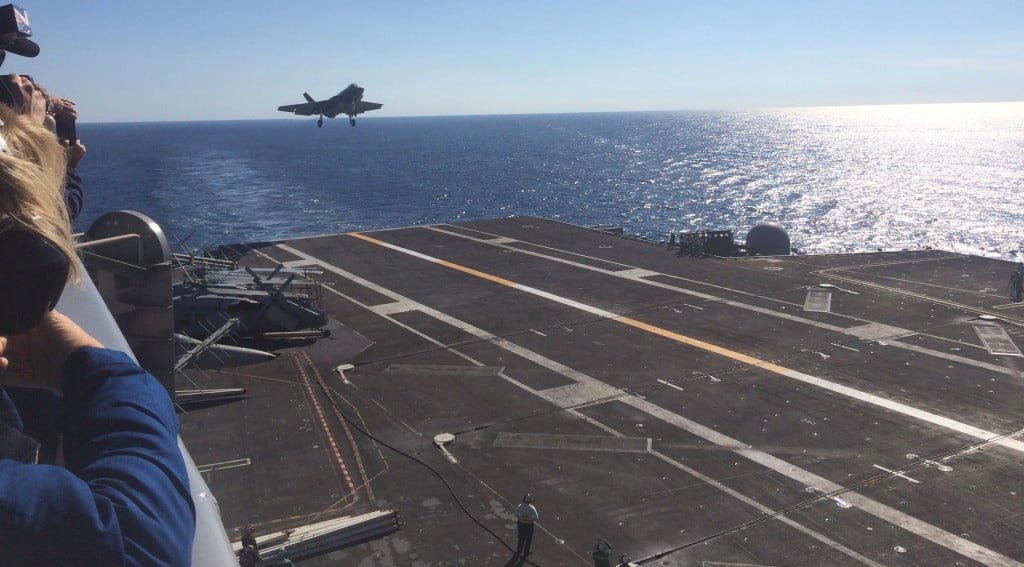2016-03-07 Developmental testing is a fact of life for operational fleets.
As one test engineer commented during our visit to Pax River, “we continue to do developmental testing on the Super Hornet here at Pax.”
And with more than 50,000 flight hours on the F-35 fleet and an operational squadron with the Marines, to be joined by the USAF this year and the Navy next year, the F-35 fleet has already taken off.
There are currently more than 250 F-35 pilots and 2,400 aircraft maintainers from six nations already trained and more than 110 jets are jointly under construction at the Fort Worth and Cameri production facilities.
The F-35 has become tactically operational in the USMC while the aircraft is undergoing developmental testing by the Pax River and Edwards AFB with an F-35 Integrated Test Force (ITF) for the USAF and USN . What is not widely understood is that the ITF is managing the ongoing developmental testing for the life of the program.
With the scope, complexity and concurrent global reach of the F-35 program, a new approach to testing was set in motion.
PAX RIVER F-35 ITF Year in Review from SldInfo.com on Vimeo.
The program is one of “spiral development” in which combat F-35 Type/Model/Series (T/M/S) airplanes emerge throughout the process to operate as effective combat assets, even while the developmental testing for all three types of F-35s continue.
Put bluntly, the F-35B in the hands of the Marines is a fully “up” combat aircraft (both airframe, sensors and weapon systems) addition to the USMC Air/Ground team.
All Squadron Pilots in Marines, USAF and Navy, will be backed up by the best test community in the world at Edwards and Pax. This partnership forged for decades will continue a dynamic synergistic combat way for the entire life of the F-35 Global Enterprise.
For the Lightning II, the past decade of putting together a unique, and innovative approach to shaping the F-35 fleet has paid off and has built a solid foundation for the decade ahead.
As US fighter pilots and their partners generate fleet and ultimately combat experience that will lead to never ending innovations and developmental testing.
Put bluntly, if you waiting for the end of developmental testing come back in 30-40 years. Meanwhile, the F-35 fleet will have reshaped air combat operations.
As Andrew Mack, F-35 Integrated Test Force chief test engineer put it:
“When the F-35B Block 2B became cleared for IOC, there were many stories about what it cannot do; that really is not the point. The plane will evolve its capabilities over time based on spiral development.
The point is that it is a very capable combat jet at the block it has achieved already.
And the impact is immediate.
Stealth from the sea is brand new for the Marine Corps and Navy.”


